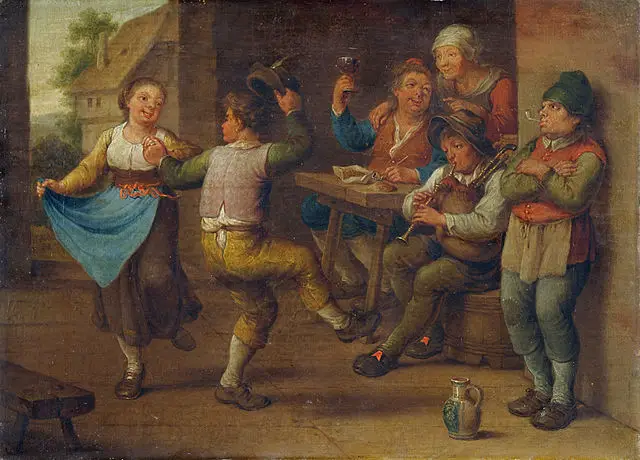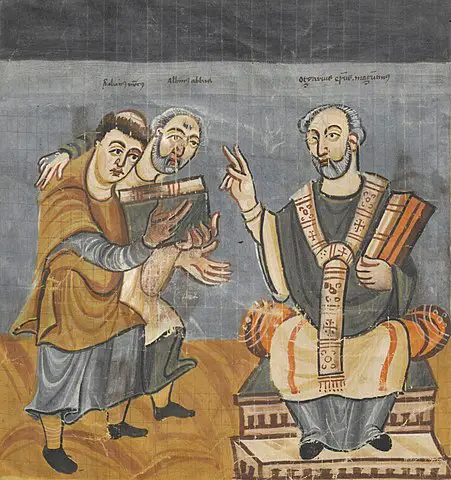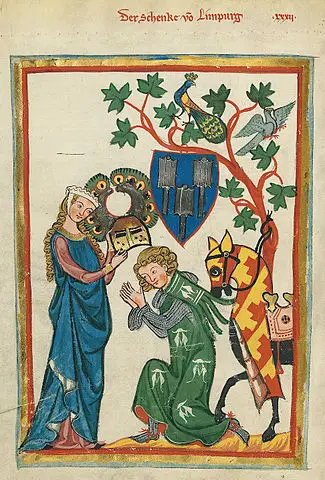
| Further Reading | Why Medieval Kings Became More Powerful Over Time |
During the medieval period, there were 3 classes of people; those who worked, those who prayed, and those who fought. It is estimated that across medieval Europe 60 million people lived in this society in one of these three classes. Here is exactly how these 3 classes of people lived their everyday lives.
Generally speaking, each of the three classes filled a purpose within medieval society. The working people’s daily lives would entail working the fields and serving in armies. The nobility’s daily lives would consist of administration and politics centered around gathering land. The clergies’ daily lives would revolve acting as an intermediary between the people and nobles.
Medieval Europe lasted for nearly 1,000 years before the modern era kicked off in the 16th century. It is important to remember that we are talking about a generalized answer in this article; I simply present a general overview of the topic here. We could argue for hours about the daily lives of medieval peasants in a village outside Copenhagen, but that would get us nowhere.
Here at The History Ace, I strive to publish the best history articles on the internet. If at the end of this article you enjoyed it then feel free to subscribe to the newsletter and share it around the internet.
Without further ado, here is exactly how the 3 classes of medieval people lived their daily lives.
The Daily Life Of The Average Working Peasant In Medieval Europe

| Further Reading | The Amount Of Hours Medieval Peasants Worked Per Week |
The first class of medieval people was the base building block of medieval society, the medieval peasant.
A medieval peasant could be either free or a serf. If the peasant was a serf that meant that they were legally tied to the land and owned by the lord who controlled it. In response, the lord or knight was responsible for their safety and general prosperity. A serf was one step above a slave and depending upon what part of medieval Europe they lived in their lives could be relaxing or hard. One important part about serfs was that they were the property of the lord and could be forced to serve in his army while on a military campaign.
The other type of medieval peasant was a free peasant. These people typically owned their own land and would build a small farming business. Unlike serfs, free peasant was responsible for their own safety and prosperity. Further, these free peasants were typically not obligated to serve in the lord’s army unless conscripted.
The average daily life of these medieval peasants ranged from relaxing to painfully hard. In northwest Europe, the growing season was smaller than in the more temperate climates. Here a peasant would only work around 20 hours a week and had time off. In eastern and southern Europe peasants would work longer hours.
Here is the average daily life of medieval peasants
- Monday-Saturday (Sunday was off)
- Get up with the sun around 7 am
- Go to farm work with tools
- Eat breakfast around 8 am
- Work until noon and have a nap during the hot part of the day
- Eat lunch around 2-3 pm
- Work until sundown around 7 pm
- Go home and go to bed
It is important to remember that these hours only existed during the growing season. If you were a medieval peasant in a region where there were only a couple of months for growing crops then you would work hard for only a portion of the year and have the rest off.
However, the lord of the fief or knight would often go out on military campaigns. If you had nothing to do chances are you would be forced to serve in their military as either a foot soldier or camp follower providing aid and comfort to the soldiers.
That is the general life of medieval peasants in Europe. Most would not travel further than the borders of their individual fief and would spend their entire lives working and living around the same people.
The Daily Life Of The Average Medieval Clergyman

| Further Reading | How Long It Took For A Medieval Monk To Copy A Book |
The second class of medieval people was the clergymen who made up the European medieval church. If the medieval peasantry was the workhorse that powered medieval society the clergyman was the glue that held it together.
The clergy of medieval Europe existed in their own world. Many were exempt from any oversight from the local lord, king, or knight. Instead, the clergy was under the authority of the pope, bishops, and other high-ranking members of the European medieval church.
A medieval monk would spend their entire lives praying, writing, reading, and helping the peasantry in the lord’s fief. Much of their daily life would be taken up by praying, which medieval monks did about 8 hours a day, 7 days a week.
Why did medieval monks pray so much? Well, this is because of the power that religion had over the minds of the average medieval peasant. The clergyman was the focal point of this religion for the local community and could help ease the burden of daily life in the fiefs of the peasantry.
Further, the knights and lords of the realm would seek the guidance of the clergy on spiritual matters along with academic guidance. The clergy of medieval Europe would toil to hand copy old books left over from the Roman period. This is one of the main reasons why old Roman and Greek writers survive to the modern day.
The clergy also filled one vital role in medieval society. They would help cement the lord’s authority over the land. Using divine mandate theory the clergy would tell the peasantry that the reason they are peasants and the knight is the lord was because of divine mandate.
Here is the average daily life of the clergy of medieval Europe.
- 7 days a week
- Wake up before dawn at 5/6 am
- Chant the Matins prayer before the dawn
- Sometime around 8 am chant the Lauds prayer
- After the Lauds, chant the Terce prayer at 9 am
- Attend the daily mass from 9:30-10:30 am
- Chant the Sext prayer between 10:30-12:00 pm
- Eat the first food around noon. This was bland fish or grain
- Break from 12-3 pm
- Chant the None prayer around 3:00 pm
- After the None prayer chant the Vespers between 4:00-5:00 pm
- Break from 5:00-10:00 pm.
- Right before bed chant the Compline prayer.
As you can see monks had a stacked schedule. A majority of their lives were taken up by praying on a fixed schedule in monasteries around medieval Europe. However, from 5:00-10:00 pm, they often had downtime where they were given a set of extracurricular activities they would have to do.
This was the daily life of the medieval clergy. During their downtime, these clergymen would spend their time copying books and even playing and practicing music.
The Daily Life Of The Average Medieval Knight

| Further Reading | Top 5 Most Interesting Facts About Medieval Society |
The third class of people in medieval society was the nobility or knights of the realm. If the medieval peasants were the workhorses powering medieval society, the clergy the glue holding it together, and the knights and nobles were the blender that mixed things up.
The nobles were considered the class who fought professionally for a living. This is kind of true, a majority of the time the nobility of medieval Europe would spend in administrative roles attending to the needs of their individual land holdings.
However, this class of people was brought up from an early age to fight and wage war in the name of their ruler or monarch. Knights were trained from the age of 5 or 7 to start fighting and would continue this training for their entire lives.
These knights would often conscript their serfs to fight in their armies as well. Even in battle most knights would serve in an administrative capacity and lead their troops from the back lines. This is where the modern game of chess comes from, all of the pawns represent a facet of medieval society with the lord controlling it.
However, the average medieval knight could easily defend themselves and fight on their own. In fact, these knights were some of the most highly trained warriors to have ever lived.
Here is the average daily life of a medieval knight.
- 6 days a week, Sunday was reserved as time off
- Wake up around 7:00 am and eat breakfast
- Start training around 8:00 am and continue up through noon
- Around noon the knight would take a break to eat
- After lunch, the knight would continue strength training with their armor up until around 4:00 pm
- After 4:00 pm a knight would begin to socialize and network with other knights of the realm to plan out political events
- Retire sometime around 10:00 pm and go to bed
The average life of medieval knights was varied. Not all knights were fighters but instead held an administrative role in the kingdom. On the other hand, some medieval knights were just professional soldiers who were good at what they did. It is difficult to say exactly what a medieval knight’s daily life consisted of but we know that they trained with their armor and weapons on a daily basis.
Conclusion
There you have it; an entire article going over the daily lives of the 3 people of the medieval era.
It is important to remember that medieval life consisted of 3 groups of people; the clergy, the peasantry, and the nobility. Further, these three groups of people lived in a society that spanned nearly 1,000 years and several thousand miles across Europe. While there are many different outliers this article presents a general consensus on the daily lives of these 3 groups of people.
I hope you enjoyed this article. Here at The History Ace, I strive to publish the best history articles on the internet. If you enjoyed this article then consider subscribing to the free newsletter and sharing it around the web.
Further, you can check out some of the other articles below.
-
How The American Revolution Changed The World

Here is how the American Revolution changed the world. Many people are not aware of just how important this event actually was.
-
Why The Roman People Loved Chariot Racing

Why did the Roman people love chariot racing? Well it all comes down to these 3 reasons.
-
The Design and Color of Roman Chariots

What was the design and color of Roman Chariots? Were they faster or slower then normal chariots? Well here is everything!
Sincerely,
Nick